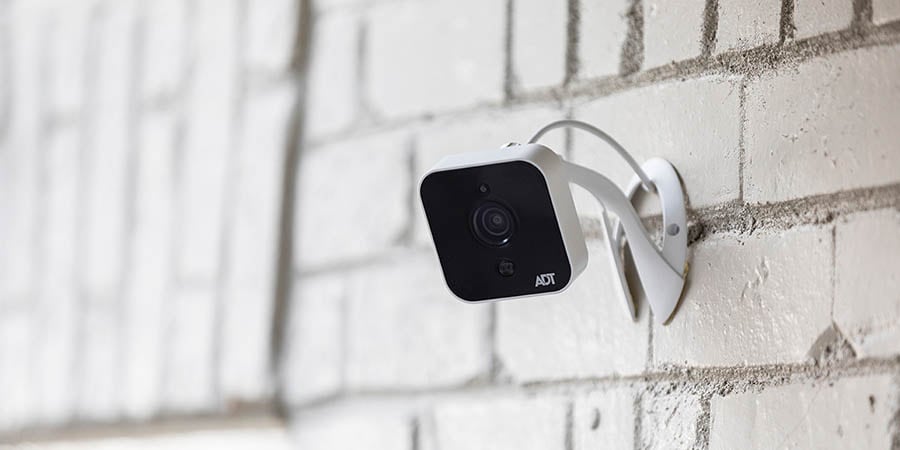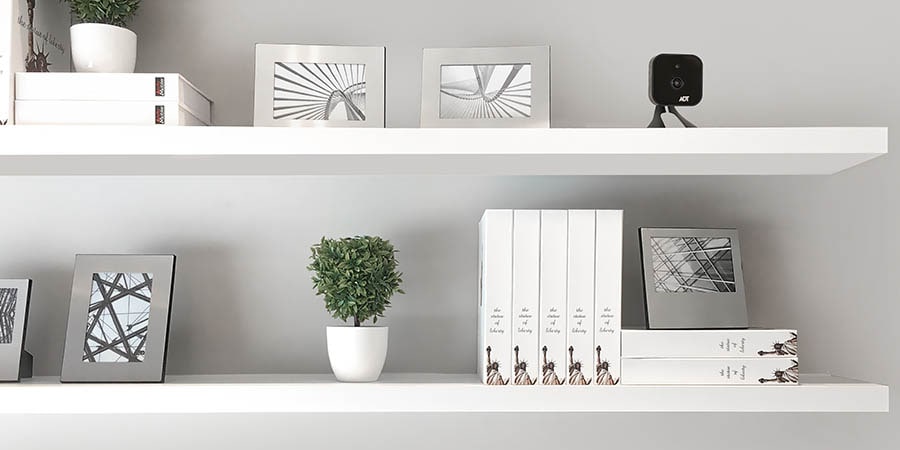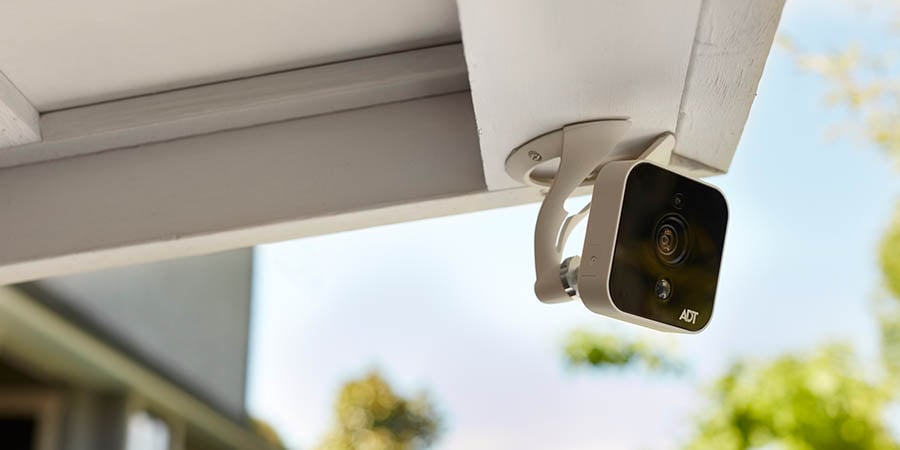Are you looking to install a home security system for your home or workplace?
Studies show that over 1.1 million burglaries happen every year. More than half of those victims are from the residential sector. If you still don't have a proper security system, you could be putting yourself at risk.
A great way to start is with security cameras. Read on and find out how security cameras function.
Different Types of Security Camera Systems: IoT Cameras and CCTV Cameras
Two main categories of cameras consist of IoT (Internet of Things) cameras and CCTV cameras, or surveillance systems.
IoT Camera Systems
These security cameras include video doorbell cameras, webcams and other cameras that receive data and send images through the IP network. These cameras are perfect for people that want situational awareness of what’s happening inside and outside the home.
What are some pros of IoT cameras?
Receive alerts when someone walks up to your door.
Keep an eye on your pet with indoor and outdoor cameras.
Often lightweight, aesthetically pleasing design.
CCTV Camera Systems
CCTV Systems are dedicated video surveillance systems meant to record 24/7. They’re made up of different components and can be analog or digital, using either DVR or NVR recording technology.
What are some pros of CCTV cameras?
Keep an ongoing log of what your cameras are recording over a long period (weeks or months).
Instead of moving your footage through the internet and the cloud, it’s more localized.
Solidly built to be noticed by anyone that comes up to your home.
NVR and DVR Systems
A video recorder stores all videos captured by the camera. The two types are network video recorder (NVR) and digital video recorder (DVR).
NVR integrates with digital security cameras, while a DVR receives transmissions from analog cameras. Both can be wired.
NVR does not use the internet for cameras. Instead, it uses the IP network in your home. DVR does not use an IP (internet protocol) network since it is analog and not digital. Either camera can be accessed remotely via the internet.
In other words, both NVRs and DVRs record, but DVRs are for an analog system, and NVRs are for a digital system.


What are the differences between analog and digital recording?
When you think of analog, you may think of an old cable TV connector. Analog cameras work the same way. If you have an analog system, you have a DVR system.
Analog security cameras still exist to accommodate consumers who prefer this security method, but it is often considered outdated.
IP cameras utilize NVR to connect to your router and can be wired or powered through an Ethernet cable (also known as Power over Ethernet, or PoE).
Wi-Fi is only one way to connect to your IP network. Ethernet is another way. You can view both analog and digital systems live, regardless of the streaming technology. You can also view the recorded video later.
So, what is the primary difference between analog and digital cameras?
The main difference between analog CCTV and digital (IP) CCTV is the method by which video is recorded and delivered.
Analog cameras record images and then send the signal over a coaxial cable to a DVR (Digital Video Recorder). The DVR converts the video from analog to digital signals, compresses the file, and stores it on a hard drive.
Digital security cameras on IP-based CCTV systems, on the other hand, record the images digitally. Then, they can receive and send data over a computer network rather than going through a DVR first.
A Wi-Fi-connected security camera allows you to receive live streaming footage.
It’s important to note that these systems can’t be mixed and matched. If you have an analog camera, you’ll need to continue using that equipment, and the same goes for digital cameras.
Does my camera need Wi-Fi?
Wi-Fi is only one way to connect to your IP network. How your camera connects to your network does not impact the application used to monitor and manage your cameras. It can do all of this with either analog or digital cameras. The connection type to the network does not matter as long as it is connected.
Wi-Fi security cameras compress other components into a single app. The app acts as the video recorder, monitor, and video management software. It allows you to do the following tasks:
Control the camera from afar.
Receive notifications when a motion or a specific person gets captured on camera.
Watch live stream footage.
You're not restricted to monitoring security on-site only–you can do it from a remote location as long as you have an internet connection. You can track what your security camera captures from virtually anywhere in the world.
Analog Cameras
You can view analog cameras live if you’re connected to the DVR remotely.
An analog camera is like a traditional CCTV system. It records the videos to external storage, usually a hard drive or an SD card.


Power Source: Wired vs. Wireless Security Cameras
The most apparent difference between a wired and wireless security camera is the effort needed to set them up. However, what separates one from the other is how each gets its power.
Wired cameras are more reliable. They need wires to run along uninterrupted in inconspicuous places on the property. It's a good choice for homeowners who won't be moving the cameras often.
Wireless cameras are a lot easier to install. These cameras are usually recommended for renters. It allows them to take their security system with them when they move.
If you have an outdated security camera system, consider upgrading to wireless. However, the choice between the two will still depend on your personal preferences.
Wired Cameras
This camera is hardwired into your home and connects to your internet feed if it is a digital camera. Analog cameras are wired and connected to the DVR, then to the internet.
Most installations need some effort to tidy up the wires. A typical wired setup requires two separate cords: one to the power outlet and another to your internet router.
But if you have a PoE (Power over Ethernet) setup, it removes the need for two wires. These cameras use one cable, connecting to the power and data over one cord.
A wired camera has the following advantages:
Reliable connection with very few signal drops.
Fewer recording issues caused by spotty internet.
Works great on larger properties and in bigger homes.
And a few things to consider when choosing a wired camera:
It can be challenging to install and often requires professional installation.
It only works as long as it’s connected to a power source, so more sensitive to power outages than a battery-powered camera.
You're safe if you have a standby generator during this critical period. Otherwise, you won’t be able to check your property's security until the power goes back on.
Wireless Cameras
Wireless cameras rely on an external power source but connect to your Wi-Fi to relay video clips.
This type of camera is typical in outdoor installations. Some models even come with solar panels, so you won't have to worry about power.
A wireless camera has several advantages over its wired counterpart:
Easy to move to a different position.
Often a long battery life.
They tend to be easier to self-install.
What are some things to consider when looking for a wireless camera?
Wireless cameras are dependent on the distance to your WiFi signal unless you get an extender.
They cover smaller distances than wired cameras, making them perfect for apartments or smaller homes.
Some signal interferences can have an impact on the camera's operation, as well as colder temperatures.
Choose wireless cameras if you have a strong Wi-Fi connection. If your signal undergoes intermittent fluctuations, this camera may not be for you.


How Do ADT Wireless Security Cameras Work?
Now that you have a basic knowledge of the vital components, you may be asking yourself how do they interact with each other in enhancing your business or home's security?
Once powered and connected to WiFi, your ADT wireless camera sends audio and video signals to your phone or cloud storage. What makes ADT unique is its integration with the ADT mobile app.
The ADT app offers a simple user interface.
You can control your security camera system even on the go to see who's at your door. And you can view footage from virtually any location and watch clips in real-time or save them for later.
Talk to visitors through ADT’s 2-way audio feature, view live feed and switch between individual cameras in your home.
Do ADT’s outdoor cameras see in the dark?
ADT wireless cameras are equipped with infrared night vision and provide illumination up to six meters, allowing you to see what is happening inside and outside your home, even at night.
How do you know if ADT cameras are recording?
Many of ADT’s IoT cameras will blink when the camera is recording, but that isn’t necessarily the case for every camera. Check the manufacturer instructions for your particular camera model to see if your particular camera blinks when it records.
How can I access my cameras remotely?
A security camera does not connect directly to a smartphone, but it does connect to Wi-Fi, which then connects to your phone. If your camera is set up for remote viewing, you can access it through a smartphone, tablet or computer.
Even with a CCTV system, you can have your footage accessible to the internet and access it through an app. The app on your phone is connected to the cloud, whether that’s ADT, cloud services, or your network provider’s cloud services.
Go Beyond Security Cameras in Ensuring Your Home's Safety
We hope that you now have significant knowledge of security cameras. Choosing the right one will be a cinch with your newfound confidence.
However, you can go further by having a complete video security system. Contact us today, and one of our ADT Specialists will be more than happy to assist you.
Frequently Asked Questions About Security Cameras
How Long Do Security Cameras Record?
Surveillance camera systems these days can record all the time. The video is usually stored on a hard drive on your property. ADT cameras start recording once they detect movement and send alerts to your phone.
Do You Need Wi-Fi for Home Security Cameras?
Wi-Fi has its own conveniences, and an ADT wireless security camera needs a connection to work. However, it's not required to operate home security cameras.
Do All Outdoor Security Cameras Need Plugging In?
Not all outdoor cameras are dependent on a power outlet. Some have batteries, while others even have solar panels.
We recommend choosing a video surveillance system that DOES plug directly into an outlet. That way, you don't need to worry about battery drain or whether your camera is connected.
Where is the best camera placement?
The best camera placement is going to depend on your particular camera, the size of your room and what you want to capture, among many other factors. ADT’s technicians take the guesswork out of camera placement, so you always get the best camera position.
Related Articles:


